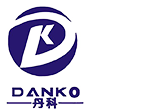Stainless Steel Sheet And Furniture PVD Coating Machines Manufacturers
Founded in 2007 as previous name Huahong Vacuum Technology,is professional China stainless steel sheet and furniture PVD coating machines manufacturers and stainless steel sheet and furniture PVD coating machines suppliers ,including but not limited to Sputtering Systems, Optical Coating Units, Batch Metallizers, Physical Vapor Deposition (PVD) Systems, Hard and Wear Resistant Vacuum Coating Deposition Equipment, Glass, PE, PC Substrate Coaters, Roll-to-Roll Machines for coating flexible substrates. The machines are used for a wide range of applications described below (but not limited to) Automotive, Decorative, Hard coatings, Tool & Metal Cutting coatings, and thin film Coating applications for industrial and Laboratories including Universities.Danko Vacuum Technology Company Ltd is committed to expand our market boundaries by providing high-quality, high-performance and wholesale stainless steel sheet and furniture PVD coating machines prices. Our Company is highly focus on after-sales service in Domestic and International markets, providing accurate part processing plans and professional solutions to meet customers need.







 Espa?ol
Espa?ol Português
Português





